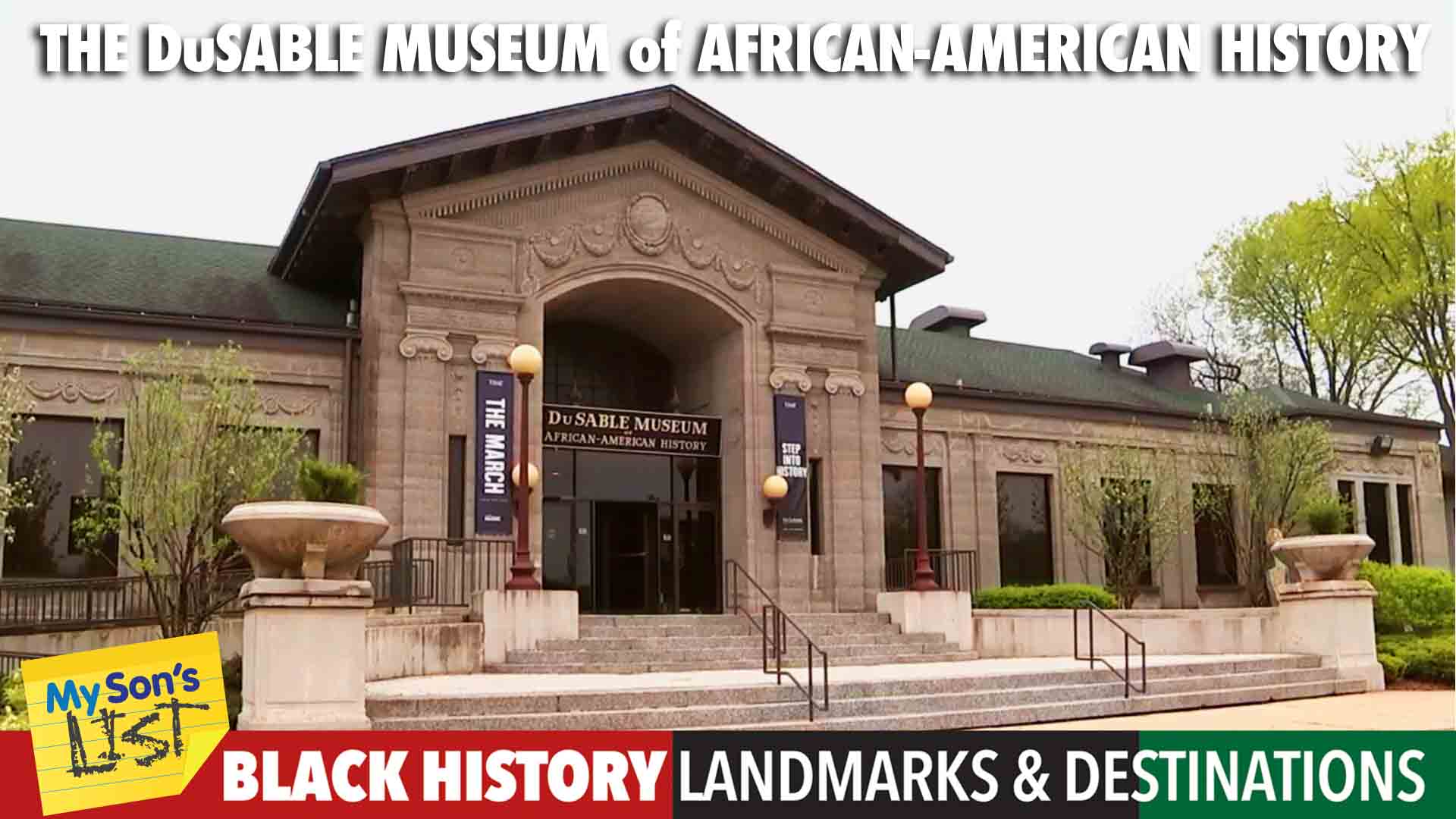Part of our African-American Landmarks & Destinations Family Travel Series
By Kimberly Dijkstra
History
Jean Baptiste Point du Sable and The DuSable Museum of African American History
He is known as the “Founder of Chicago.” If you are not from Chicago, you may not know his name, but you should.
Jean Baptiste Point du Sable was one of the earliest recorded non-indigenous permanent settlers of the area that would grow into the city of Chicago as we know it today. Historians know little of his early life ー even his date and place of birth are unknown. He may have been a native of Santo Domingo, Dominican Republic, or born in Saint-Marc, Haiti.
A French-speaking Black man, Point du Sable may have entered what is now the United States from the north by way of French Canada or from the south through French Louisiana. Historians do know that he married a Potawatomi woman named Kitihawa in 1788 and had two children ー a son and a daughter. Point du Sable supported his family as a frontier trader.
Following the American Revolutionary War, Point du Sable settled on the north bank of the Chicago River. Contemporary diary entries of other traders place him in the area in the 1780s and describe him as a large man and a wealthy trader. His granddaughter, Eulalie Pelletier, was the first non-native to be born in the settlement called Checagou, the name given by Native Americans.
In 1800, Point du Sable sold his farm, which by that point included a log cabin house, two barns, a horse-drawn mill, a bakehouse, a poultry house, a dairy, and a smokehouse. He moved to what is now Missouri and historians again dispute exactly what he did at this time in his life. However, it is known that he died in 1818 and was buried in an unmarked grave. His contributions to the future of the country went unnoticed and the parish burial register simply described him as négre, which is French for negro.
Chicago continued to develop into a rapidly growing Midwestern city. By the 1850s, Blacks fleeing oppression began to settle into a cohesive community there.
For a time, Point du Sable was all but forgotten. John Kinzie, a Scots-Irish fur trader who purchased Point du Sable’s Chicago River property, received credit for settling the city well into the 20th century. It was not until 1933, when several African-American groups campaigned for Point du Sable to be honored at the Chicago World’s Fair, that he earned any international recognition.
Legacy
In 1961, Margaret Taylor Burroughs established the country’s first independent museum celebrating Black culture on the South Side of Chicago. The artist, educator, writer, and activist named the institution the Ebony Museum of Negro History and Art. On the 60th anniversary of the museum’s inauguration, it was renamed to honor Jean Baptiste Point du Sable.
The DuSable Museum of African American History is dedicated to collecting, documenting, preserving, studying, and disseminating the history and culture of Africans and African Americans. It welcomes more than 100,000 visitors annually and offers unique exhibits, special activities, and educational programs.
With a collection of 13,000 artifacts, books, photographs, art objects, and memorabilia, the museum tells the stories of African-American achievements throughout the ages. One notable piece on display is “Freedom Now,” a mural carved by Robert Witt Ames depicting 400 years of suffering, struggle, and triumph of African-American people.
In addition to the museum, several other landmarks and institutions have been named after Point du Sable. DuSable High School opened in 1935 in the Bronzeville neighborhood and the building was designated a Chicago Landmark in 2013.
In 1965, the Pioneer Court was built on the former site of Point du Sable’s homestead during the construction of the Equitable Life Assurance Society of America building. In 1976, the plaza was listed on the National Register of Historic Places as a National Historic Landmark. A large bronze bust of du Sable was erected at the site in 2009 and the following year, the adjacent Michigan Avenue Bridge was renamed DuSable Bridge.
A short walk down the Chicago Riverwalk brings you to DuSable Harbor and DuSable Park. The park is awaiting redevelopment and is not yet open to the public.
In 2021, Chicago’s Lake Shore Drive was renamed in honor of Point du Sable. The official name change to Jean Baptiste Point du Sable Lake Shore Drive was first proposed in 1993, but failed to gain traction until the murder of George Floyd sparked a change in the political landscape.
Finally, the DuSable Heritage Association promotes the legacy of DuSable through their sponsorship of art programs and scholarships, organization of film festivals and fundraising galas, and participation in panel discussions and other civic activities. The Founder of Chicago will never again be forgotten.
More Landmarks and Destinations
Selma to Montgomery Historic Trail
Martin Luther King Jr. Memorial
Maggie L. Walker National Historic Site
Booker T. Washington National Monument
The DuSable Museum of African American History
Sojourner Truth - Monuments To A Monumental Woman

